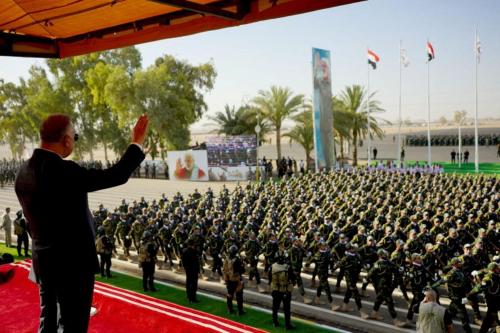The following is the first of a two-part series on Michael O’Hanlon’s recent trip to Afghanistan. Click here to read the second part of this series.
The news from Afghanistan all year has been dispiriting, and the last few weeks have been especially tough in terms of the violence. Yet most foreign and Afghan officials and officers who I encountered on a recent weeklong visit sponsored by the U.S. military are guardedly optimistic about our prospects.
How can this be so? Sure, we have all heard the theoretical explanation of how this war, like any counterinsurgency, could be won through a “clear, hold, and build” process of pushing extremists out of population centers and then helping establish a legitimate Afghan government in their place. But can it really work in tribal, underdeveloped Afghanistan?
There are several general reasons for hopefulness to balance all the bad news.
- The Afghan people remain much more pro-Western and pro-American than generally portrayed. Arguments that Afghans are allergic to foreigners and xenophobic in outlook are much more wrong than right.
This is evident in public opinion polling, where recent polling has put U.S. and NATO popularity at more than 50 percent. It is also evident in the zones of relative safety that American, British, Canadian and other NATO soldiers have established of late in the south of the country. For example, Helmand province looks a great deal like al Anbar in Iraq, with desolate desert broken only by a fertile river valley where the preponderance of the population resides. But there is a big difference – Iraqi Sunnis along the Euphrates River were generally extremely anti-American, whereas Afghans seem to relish the frequent Marine foot patrols through their villages and markets. Elders sometimes even ask if anyone knows, by name, the individual Americans who helped build their irrigation canals in the 1950s and whom they remember fondly to this day.
Admittedly, not all is well. But those who resent us – and they are admittedly a larger number than before – criticize our failed performance over the last eight years much more than our presence. In other words, they don’t mind being “occupied” so much as being occupied incompetently.
While poverty remains rampant and the opium economy predominates in much of the country, Afghans nonetheless appreciate the impressive gains registered so far this decade in education, health care, access to cell phones and electronic media, and other quality of life measures. If we can arrest the downward spiral of violence and lawlessness, we will win many converts fairly quickly.
- The relative success of the Afghan army shows that institutions can be built in this country. It is not a land lacking national cohesion or identity. While illiteracy is widespread, and tribal identities do remain strong for some, there are many individuals committed to building their nation. The Afghan army is generally regarded as dependable by its citizens. For example, truck drivers bringing supplies to Marines in Helmand province report few if any cases of being asked to pay bribes at army checkpoints in the south.
- We finally have the “A team” deployed to this mission, as one general remarked to me in Kandahar. Not only the United States, but Great Britain, is quite committed to the effort. Other allies like Canada, the Netherlands, Denmark, Australia and France are fighting hard, too.
The “civilian surge” has begun; I was extremely impressed by the quality, commitment, and growing presence of American diplomats and development workers – not only in the embassy in Kabul, but in their dusty plywood offices and on the streets of Kandahar and Helmand. We had only a handful of American civilians in southern Afghanistan a year ago; now the number is 80, and will exceed 100 early in 2010. They also have money to spend, a key to success here. Finally, they also display a growing understanding of tribal identities and dynamics that eluded foreign forces in earlier periods of the war.
So how do these general assets translate into a vision for victory? Success in Afghanistan should be defined realistically – as weakening the insurgency rather than defeating it outright, while providing Afghans the tools to continue the fight primarily on their own. Achieving this goal requires neither complete eradication of opium, nor a thriving economy, nor a political class free from corruption. But it does require better security, as well as a government able to deliver some basic services to its people.



Commentary
Op-edVision for Victory in Afghanistan – Part I
November 18, 2009